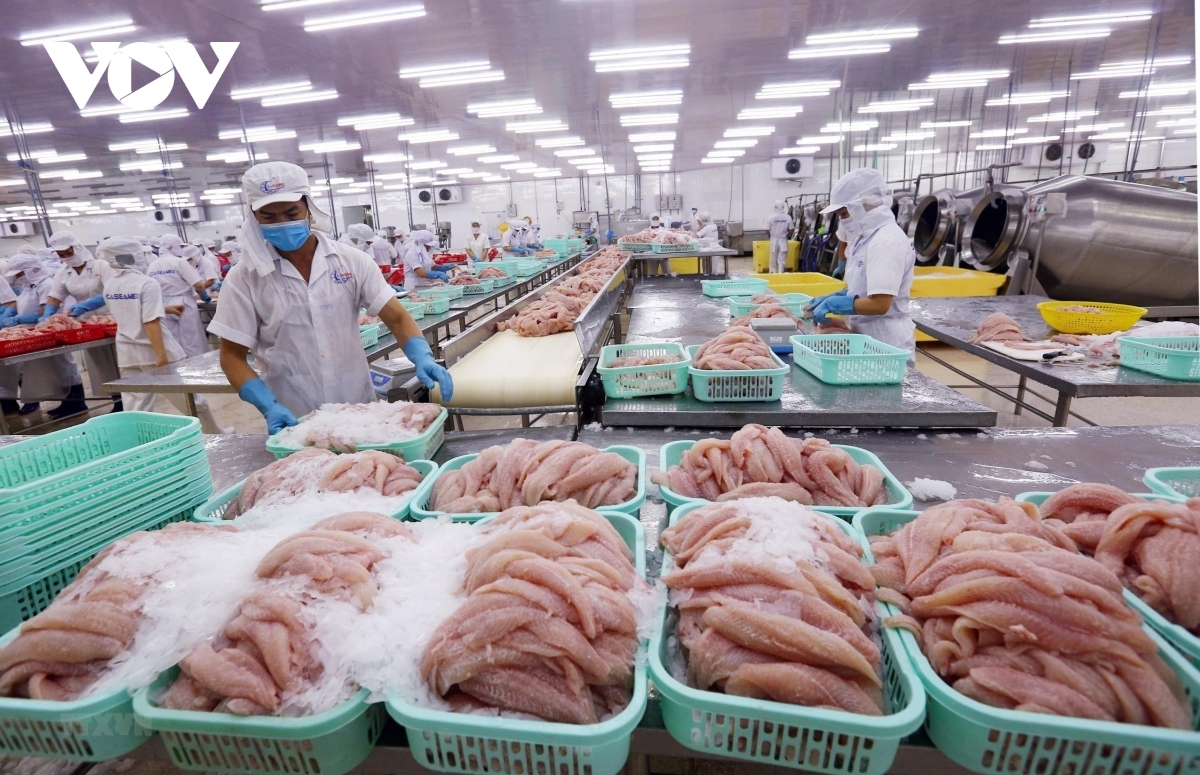Trade turnover with Egypt set to reach US$1 billion over five-year period
VOV.VN - Although trade potential between the nation and Egypt has yet to be fully exploited, both sides are poised to strive to reach a sustainable trade turnover target of US$1 billion over the next three to five years providing there are thorough preparations in place for the long term.

Nguyen Duy Hung, head of the Vietnam Trade Office in Egypt, made the statement during a recent interview with a VOV correspondent based in Egypt, in which he mentioned challenges and ways to promote exports to the Middle East and African markets. This is a particular challenge in the context of the novel coronavirus (COVID-19) pandemic still negatively affecting exports.
With regard to the impact of the COVID-19 pandemic on the country’s trading ties with Egypt, the Middle East, and Africa, Hung said that the COVID-19 pandemic has had a wide-reaching impact on trade activities between the country and markets based in the two continents, with both negative and positive aspects.
In terms of the negative side, preliminary statistics compiled by the General Department of Vietnam Customs during the past 11 months of 2020 indicate that, with the exception of Saudi Arabia, most of the nation’s main export markets in the region, such as Israel, South Africa, Turkey, and Egypt recorded a relatively high decline compared to the same period last year.
According to figures released by the General Department of Vietnam Customs, although there was a strong recovery enjoyed during the final months of 2020, the nation’s 11-month export turnover reached over US$400 million, down by 5% compared to the same period from 2019. Of the figures, essential goods endured a sharp fall, including food and seafood which fell by 24.7%, fruit and vegetables which dropped by 42%, whilst phones and accessories were down by 18.5%.
Despite these declines, the positive side stems from the supply of goods during the pandemic which forced Egypt to diversify their suppliers from many countries in an effort to avoid depending on a source of goods from a certain nation.
Most notably, Egypt is a country that records a trade deficit, with many products which are dependent on foreign supplies. Therefore, Vietnamese enterprises have fresh opportunities to expand and increase turnover and market share for many potential products.
Amid the impact of the COVID-19 pandemic, many Vietnamese products recorded impressive growth, such as cashew nuts which rose by 49%, peppers up by 16.5%, coffee up by 14%, along with machinery and equipment which went up by 20%.
Although the export structures of both countries share many similarities, for example agricultural products are the strengths of each nation, this is also a point that can complement each other due to each country having agricultural products with their own export strengths. In relation to the nation, in addition to products that are able to secure a foothold in the Egyptian market, such as peppers and cashew, there are many others Vietnamese items which can still improve their market share moving forward such as tea, coffee, and rice.
At present, Egyptian companies are particularly interested in seafood, especially local items such as canned tuna. This comes after Egypt imported US$162 million worth of this item in 2019, although Thailand was the main supplier, accounting for US$145 million. Despite ranking second, Vietnam only made up 5.6% of the market share with approximately US$9 million, Hung said.
Frozen shrimp is another product that has huge potential for exports by local enterprises. In 2019 Egypt imported US$164 million worth of frozen shrimp, with the majority of this coming from the UAE which accounted for 89%, followed by Saudi Arabia with 7.6%, while the value of Vietnamese frozen shrimp exports to this market were negligible, at roughly US$180,000 according to data compiled by Vietnam Customs.
Concerning the textile and garment sector, fibers, artificial fibers, and fabrics face import taxes between 5% and 10% into Egypt, therefore allowing firms to increase export turnover because the country only exports US$60 million to the market. In addition, the North African nation imported some US$2 billion worth of products in 2019, mainly from China.
“In addition, there are many other potential areas that Vietnam has strengths such as wooden products, plywood used in household and construction, and products from natural rubber such as car tires since Egypt has almost no natural forests. We also have not fully exploited the market potential of industrial products such as equipment, auto parts, machinery, and equipment for Egyptian manufacturing industries,” Hung noted.
Commenting on what should be done for relevant agencies and businesses from both sides to meet the bilateral trade target of US$1 billion, especially amid the current economic crisis and pandemic, Hung outlined the current levels of trade between Egypt and ASEAN. Indeed, some of the bloc’s member states such as Indonesia and Thailand have been able to successfully maintain a stable trade turnover of over US$1 billion with the North African nation over many years.
Furthermore, the total import-export turnover between the country and Egypt in 2019 reached a mere US$500 million, the highest ever despite the two countries signing the Agreement on Trade back in May, 1994. This is along with many other economic co-operation agreements with the aim of elevating bilateral trade turnover to US$1 billion moving forward. As such, both nations failed to surpass the figure, largely due to the impact of the COVID-19 pandemic during 2020, the trade official evaluated.

Hung also underlined the need for competent agencies from both sides to accelerate the signing of documents in an effort to activate the terms of signed co-operation agreements, as well as opening the market for each other's agricultural products.
Moving forward, it can be considered that agricultural products of Egypt such as potatoes, onions, and fruits represent positive choices for the nation’s diverse fruit and vegetable market, while Vietnam also has products such as dragon fruits that has yet to penetrate the Egyptian market.
In the long run, a free trade agreement between both sides, or with the Arab bloc as a whole, should be considered.
Moreover, it is necessary to diversify information regarding exchange channels, especially the application of technological powers to create information bridges that allow enterprises to quickly access each other's needs. This is in addition to conducting online transactions based on close co-operation between both nations' chambers of commerce and business associations.
"I hope that many Vietnamese enterprises will run greater investment in the Egyptian market by opening a representative office to do market research, and learn about consumer culture and preferences of Muslims toward their products. They can then take the next steps towards establishing a business or a commercial branch in the host nation," Hung said.
He also called on the Vietnamese Embassy to make greater efforts to improve their professional capacity, policy research, and market forecasts in order to provide timely information and support, whilst also offering advice and solutions to boost trade ties between the two countries.
"I believe that with the efforts of the two nations' relevant agencies, associations, and businesses, Vietnam and Egypt will soon achieve a sustainable bilateral trade turnover of US$1 billion as a contribution to strengthening their good time-honoured relationship," Hung added.
